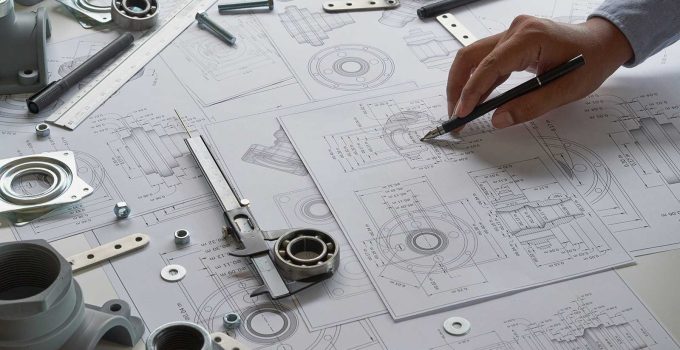Engineering, a discipline that has been at the forefront of human progress for centuries, continues to evolve at a rapid pace. As technology advances and global challenges become more complex, the field of engineering is experiencing significant transformations. From sustainable practices to cutting-edge technologies, the latest trends in engineering are shaping the future of industries and societies around the world. This article delves into the most recent developments in engineering, exploring how they are influencing various sectors and what they mean for the future.
The Rise of Sustainable Engineering

One of the most significant trends in engineering today is the emphasis on sustainability. As the world grapples with climate change, resource depletion, and environmental degradation, engineers are increasingly focusing on developing solutions that minimize environmental impact and promote sustainability.
Renewable Energy Systems
Renewable energy is at the forefront of sustainable engineering. Engineers are innovating in the design and implementation of renewable energy systems such as solar, wind, and hydroelectric power. Recent advancements include more efficient solar panels, larger and more powerful wind turbines, and the integration of smart grids that optimize energy distribution.
In addition, engineers are exploring ways to store renewable energy more effectively, addressing one of the biggest challenges in the field. Innovations in battery technology, including the development of solid-state batteries and advanced energy storage systems, are helping to make renewable energy more reliable and accessible.
Green Building Design
Green building design is another area where engineering is making significant strides. Engineers are developing buildings that are energy-efficient, use sustainable materials, and incorporate renewable energy sources. The latest trends include the use of advanced materials such as cross-laminated timber, which has a lower carbon footprint than traditional building materials, and the integration of green roofs and walls that provide insulation and reduce urban heat islands.
Moreover, engineers are using Building Information Modeling (BIM) and other digital tools to design buildings that are not only sustainable but also optimized for performance throughout their lifecycle. These technologies allow for more accurate simulations of how buildings will perform in real-world conditions, leading to more efficient designs.
Circular Economy Principles
The concept of a circular economy, where resources are reused and recycled rather than discarded, is gaining traction in engineering. Engineers are developing processes and products that minimize waste and promote the reuse of materials. This includes designing products with longer lifespans, developing recycling technologies, and creating systems that facilitate the recovery and reuse of materials.
For example, engineers are working on innovations such as modular product designs that can be easily disassembled and repurposed, and advanced recycling processes that can recover valuable materials from electronic waste. These efforts are helping to reduce the environmental impact of industrial processes and contribute to a more sustainable future.
The Impact of Digital Transformation

Digital transformation is reshaping the engineering landscape, with technologies such as artificial intelligence (AI), the Internet of Things (IoT), and advanced robotics playing a central role. These technologies are enabling new ways of designing, manufacturing, and maintaining products and systems, leading to increased efficiency and innovation.
Artificial Intelligence and Machine Learning
AI and machine learning are being integrated into engineering processes to enhance design, optimization, and decision-making. Engineers are using AI to analyze large datasets, identify patterns, and make predictions that inform design decisions. For example, AI is being used to optimize the design of complex systems such as aircraft, where it can evaluate thousands of design variables to find the most efficient solution.
In manufacturing, AI-powered systems are improving quality control by detecting defects in real-time and predicting maintenance needs before they become critical. This predictive maintenance is reducing downtime and extending the lifespan of machinery, leading to cost savings and increased productivity.
The Internet of Things (IoT)
The IoT is revolutionizing engineering by connecting devices and systems to the internet, allowing them to collect and exchange data. This connectivity is enabling engineers to monitor and control systems remotely, optimize performance, and respond to issues in real-time.
In smart cities, IoT-enabled infrastructure is being used to manage traffic, reduce energy consumption, and improve public safety. In industrial settings, IoT sensors are monitoring equipment and processes, providing engineers with real-time data that can be used to optimize operations and prevent failures.
The integration of IoT with AI is further enhancing its capabilities, enabling systems to learn from data and improve over time. This combination of technologies is driving the development of smart factories, where production processes are automated and optimized to a degree that was previously unimaginable.
Advanced Robotics and Automation
Advanced robotics and automation are transforming industries by taking over repetitive and dangerous tasks, improving precision, and increasing efficiency. Engineers are developing robots that can perform complex tasks with high accuracy, such as assembling intricate components or performing surgeries.
Collaborative robots, or cobots, are designed to work alongside humans, enhancing their capabilities and reducing the physical strain of certain tasks. These robots are equipped with advanced sensors and AI, allowing them to adapt to changes in their environment and work safely with human operators.
In addition, automation is being used to streamline production processes, reduce costs, and increase output. Automated systems are being integrated into everything from automotive manufacturing to food processing, leading to more efficient and flexible production lines.
The Emergence of New Materials

The development of new materials is a critical area of innovation in engineering. These materials are enabling new applications, improving performance, and contributing to sustainability. Recent advancements in materials science are leading to the creation of materials with unique properties, such as increased strength, lightweight, and enhanced thermal conductivity.
Nanomaterials
Nanomaterials, which are materials engineered at the nanoscale, are opening up new possibilities in engineering. These materials have unique properties that differ from their bulk counterparts, such as increased strength, conductivity, and reactivity.
Engineers are exploring the use of nanomaterials in a wide range of applications, including electronics, energy storage, and medicine. For example, carbon nanotubes are being used to create stronger and lighter materials for aerospace applications, while graphene is being investigated for use in advanced batteries and flexible electronics.
3D Printing and Additive Manufacturing
3D printing, also known as additive manufacturing, is another area where new materials are having a significant impact. Engineers are developing new materials specifically designed for 3D printing, including metals, ceramics, and composites. These materials are enabling the production of complex and customized parts that would be difficult or impossible to manufacture using traditional methods.
3D printing is also contributing to sustainability by reducing material waste and enabling the production of parts on demand, reducing the need for large inventories and long supply chains. Engineers are using 3D printing to create everything from medical implants to aerospace components, and the technology continues to evolve rapidly.
Sustainable and Biodegradable Materials
The demand for sustainable and biodegradable materials is driving innovation in engineering. Engineers are developing materials that are not only high-performing but also environmentally friendly. This includes the use of bio-based materials, such as bioplastics made from renewable resources, and the development of biodegradable materials that break down naturally in the environment.
These materials are being used in a variety of applications, from packaging to automotive parts, and are helping to reduce the environmental impact of products. As regulations and consumer preferences shift towards sustainability, the demand for these materials is expected to grow, driving further innovation in the field.
The Role of Engineering in Addressing Global Challenges

Engineering is playing a crucial role in addressing some of the most pressing global challenges, from climate change to public health. Engineers are developing solutions that have the potential to improve the quality of life for millions of people around the world.
Climate Change Mitigation and Adaptation
Engineers are at the forefront of efforts to mitigate and adapt to climate change. This includes the development of renewable energy systems, energy-efficient buildings, and sustainable transportation solutions. Engineers are also working on technologies that can capture and store carbon dioxide, reducing greenhouse gas emissions.
In addition to mitigation efforts, engineers are developing adaptation strategies to help communities cope with the impacts of climate change. This includes designing infrastructure that can withstand extreme weather events, developing water management systems for areas affected by drought, and creating resilient food systems.
Public Health and Safety
The recent global health crisis has highlighted the importance of engineering fiatogel in public health and safety. Engineers have been instrumental in developing medical technologies, such as ventilators and diagnostic devices, as well as creating systems for the safe distribution of vaccines and other medical supplies.
In addition to responding to emergencies, engineers are working on long-term solutions to improve public health, such as developing clean water and sanitation systems for underserved communities and designing environments that promote physical activity and well-being.
Conclusion
The field of engineering is undergoing rapid transformation, driven by advancements in technology, a growing emphasis on sustainability, and the need to address global challenges. The latest trends and innovations in engineering are reshaping industries and societies, offering new solutions to complex problems and creating opportunities for a more sustainable and prosperous future.
As engineers continue to push the boundaries of what is possible, their work will play a crucial role in shaping the world of tomorrow. Whether through the development of new materials, the integration of digital technologies, or the pursuit of sustainable practices, the impact of engineering will be felt across all aspects of life, paving the way for continued progress and innovation.
Read More Article About “Blue Diamond: Experience the Majestic Beauty and Unmatched Brilliance of This Exquisite Gem“




